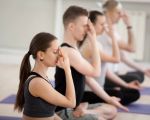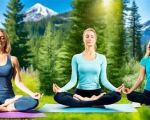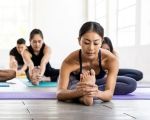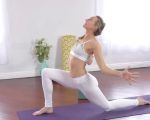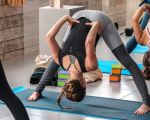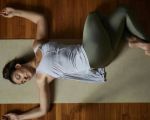1. The Importance of Core Strength and Posture
A strong core and good posture are foundational to overall health and wellbeing. The core muscles, including the abdominals, lower back, hips, and pelvis, stabilize the body, support spinal alignment, and enable smooth movement. Poor posture and weak core muscles can lead to chronic pain, decreased mobility, and increased risk of injury.
In today’s sedentary lifestyle, many people suffer from postural issues caused by prolonged sitting and lack of physical activity. Strengthening the core is not just about aesthetic goals; it significantly improves balance, endurance, and daily functional movements. Moreover, good posture enhances breathing efficiency and boosts confidence.
2. How Yoga Helps Strengthen the Core
Yoga is uniquely effective for core strengthening and posture improvement because it combines strength, flexibility, and mindfulness. Unlike traditional core workouts that focus on isolated muscles, yoga engages multiple muscle groups simultaneously, promoting functional strength and balance.
Many yoga poses require active engagement of the deep abdominal muscles, pelvic floor, and back stabilizers, which together form a strong core unit. Additionally, the emphasis on breath control and alignment during yoga cultivates awareness of posture in everyday activities, helping practitioners maintain a healthy spinal position even off the mat.
3. Yoga Poses for Core Strength and Posture Improvement
Several yoga poses specifically target core muscles while promoting better posture. For example, Plank Pose builds endurance in the abdominals and shoulders, helping stabilize the spine. Boat Pose intensively works the front abdominal muscles and hip flexors, enhancing overall core power.
Bridge Pose strengthens the lower back and glutes, key for maintaining a neutral spine. Downward Facing Dog encourages lengthening the spine and strengthening the shoulders, supporting upright posture. Incorporating a balanced sequence of these poses can yield noticeable improvements over time.
4. Real-Life Examples of Yoga Benefits for Core and Posture
Jessica, a 35-year-old graphic designer, shared how yoga transformed her posture after years of desk work. She reported less back pain and improved energy after consistently practicing core-focused yoga for three months. Her story highlights how yoga’s integrative approach can address modern lifestyle challenges effectively.
Similarly, Mark, an amateur athlete, used yoga to enhance core stability which improved his running performance and reduced injury frequency. These personal experiences illustrate that yoga for strengthening the core and improving posture is beneficial across diverse lifestyles and fitness levels.
5. Integrating Yoga into Daily Routines for Best Results
Consistency is key to reaping the benefits of yoga for core strength and posture. Short daily sessions focusing on targeted poses, combined with mindful posture checks throughout the day, can create lasting habits. Using tools like yoga blocks or straps can aid beginners in maintaining correct alignment.
For those with busy schedules, even 15 minutes of dedicated practice can produce meaningful improvements. Over time, these small daily investments build resilience and body awareness, translating to healthier posture and reduced discomfort in everyday life.
6. Professional Insights and Expert Advice
Yoga instructors emphasize the importance of engaging the core gently rather than straining, ensuring movements support the spine rather than compress it. Physical therapists often recommend yoga as a complementary practice for rehabilitating posture-related issues because of its holistic nature.
Experts advise combining yoga with other activities such as Pilates or strength training for comprehensive core development. They also highlight the mental benefits of yoga, including stress reduction, which indirectly supports better posture by decreasing muscle tension and promoting relaxation.
7. How Free Yoga Links Can Support Your Practice
To make yoga accessible and effective, Free Yoga Links offers a curated selection of online classes and resources focusing on core strengthening and posture improvement. Their platform helps practitioners find appropriate sequences tailored to different skill levels and needs.
By utilizing these free resources, beginners and experienced yogis alike can deepen their practice, gain expert guidance, and maintain motivation. Whether you want to alleviate back pain or improve athletic performance, Free Yoga Links provides practical tools to support your journey toward a stronger core and healthier posture.

